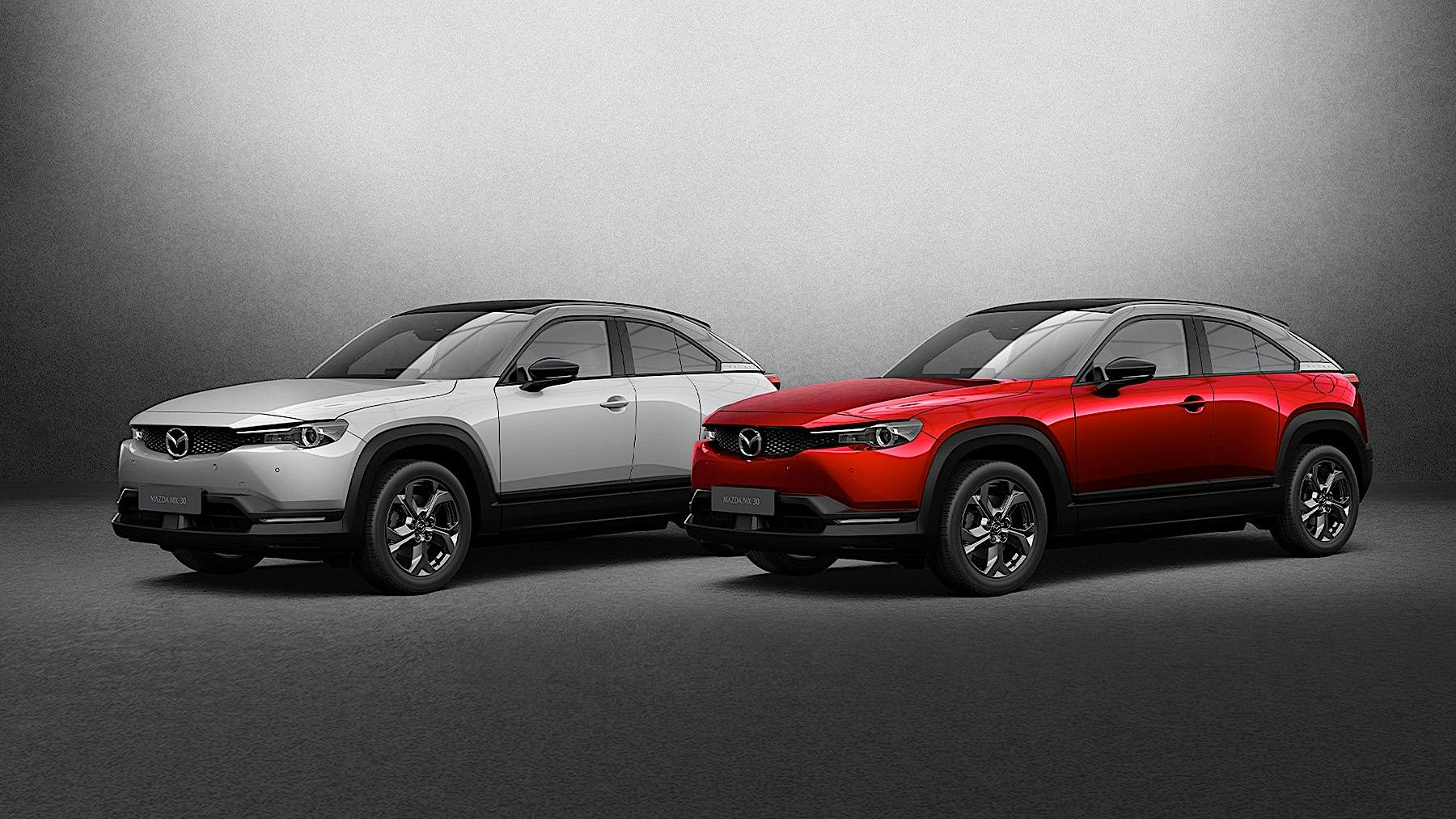Mazda has announced that it will launch six new models globally starting next year and continuing through 2023. Every single model also happens to be a crossover and happens to be electrified in some form. This also launches the brand’s new nomenclature, which ranges from CX-50 to CX-90. Speaking of CX-50, that model will be the first model in some time to be built in the U.S. at the new Mazda-Toyota facility in Huntsville, Alabama. That model will be sold alongside the CX-5 and share the same underpinnings as the CX-30 and Mazda3. It will also be the first Mazda to feature a hybrid powertrain sourced from Toyota.
For North America, three models will join the lineup after the CX-50. A two-row crossover called the CX-70 will join the lineup slotting above the CX-50 while the CX-90, a three-row model, will be the new flagship replacing the CX-9. The CX-70 and CX-90 will be the first Mazda models in North America to use the brand’s rear-drive-based platform. They’ll also be the first to use Mazda’s new inline-six engines, which will be available in plug-in hybrid flavor.
In other markets like Europe and Japan, Mazda will introduce the CX-60 and CX-80. The former is a two-row crossover while the latter has three rows. They’ll utilize a plug-in hybrid powertrain based on a four-cylinder engine. These will also offer six-cylinder Skyactiv-X compression ignition gas and Skyactiv-D Diesel engines in combination with 48-volt mild hybrid systems.
During the first half of 2022, Mazda will introduce the plug-in hybrid variant of the MX-30. Unlike the upcoming crossovers, the smaller MX-30 will be a series hybrid setup with a rotary engine serving only as a generator producing electricity for the battery and electric motor. Think of it as an EV with a backup plan because the electric motor is the only one turning the wheels. This should make the PHEV variant more viable than the EV, which is EPA-rated for only 100 miles per charge. Mazda hasn’t released many details regarding the MX-30 PHEV but we expect the battery to remain the same size since it’s mounted under the floor. The gas tank will be mounted under the rear seats and will likely be large enough to allow the car to travel longer distances.
The plug-in hybrids based on the new inline-six engine will be a parallel setup. That means it’ll come with a traditional eight-speed automatic transmission. It’s electric motor will be sandwiched between the engine and gearbox. Mazda hasn’t revealed many details on this powertrain but it’s likely that it’ll be the most powerful option on the CX-70 and CX-90. Like in the MX-30, the battery will be mounted under the floor to lower the vehicle’s center of gravity and minimize intrusions into the cabin.
In 2025, Mazda will debut its first dedicated battery-electric vehicle platform. This will likely be Mazda’s variant of Toyota’s e-TNGA platform, which was jointly developed with multiple Japanese automakers including Subaru, Daihatsu, and Suzuki. Each automaker that’s part of the partnership formed by Toyota will have their own version of the platform and Mazda is likely developing one to fit the brand’s needs. Mazda aims to complete its electrification initiative by 2030, which will see all of its models get some form of electrification. Like most Japanese automakers, Mazda is taking a multipronged approach, offering EVs and hybrids instead of putting their eggs all in one basket.

